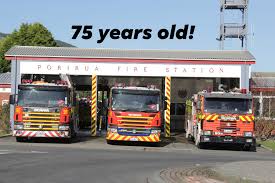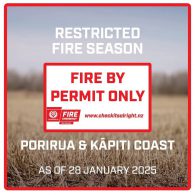Fire Safety Advice – At Your Home
Kitchen
25% of ALL house fires start in the kitchen
- If you must leave the room, TURN OFF the stove.
- Clean your stove grill after each use to prevent the build up of spilled fats and burnt foods.
- Clean rangehood filters regularly.
- Curtains, tea towels, oven mitts and any flammable items should be kept well away from the cooking area.
- Have a fire extinguisher and/or fire blanket correctly located in your kitchen and make sure you know how to use them.
- Never throw water on to a frypan that’s on fire.
- Never, ever attempt to carry a burning frypan outside.
- If your frypan is on fire, wet a teatowel and place it over the pan or use a large flat object (like a chopping board) to starve the fire of oxygen.
- If you do have a fire on your stove, try (if you can) to turn the power or gas off either at the stove or at the mains.
- Alcohol is involved in 50% of all fatal fires. So don’t drink and fry, get takeaways delivered instead or use the microwave.
Living Room
Half of all people who die in fires are careless with their cigarettes, matches or lighters.
- Ensure that all smoking materials are properly extinguished before you leave a room.
- NEVER leave lit cigarettes unattended.
- Keep matches and lighters out of reach of children.
- Don’t leave dirty ashtrays in reach of toddler and babies – the butts are toxic.
- Do not smoke near children in the home or car. Passive or second hand smoke is dangerous.
- Open fires should be screened with a proper fireguard and NEVER left unattended.
- Ensure you have the chimney checked and/or swept annually.
- Dispose of ashes safely in a bucket. They can take up to three days to cool.
- Ensure flammable liquids are not used to start an open fire.
- Do not overload powerpoints or multiboards with high wattage appliances like heaters.
- Do not hang clothes on the heater to dry them out.
Bedroom
Decorative and fragranced candles may be an attractive addition to your home decor, but if used improperly, they can be a serious fire hazard.
- Take care when using candles or any naked flame and NEVER leave unattended.
- Ensure the candle is placed on a fire retardant surface i.e. ceramic plate.
- Children should never use candles – especially in bedroom.
- Ensure you have the correct bulb size and rating (in watts) fitted in lamps, according to manufacturer specifications.
- Keep a torch near the bed.
Electric Blankets
Worn and old electric blankets can cause electric shock, fire and possibly even death.
- Have your electric blanket tested annually by a qualified electrician.
- Turn off the electric blanket power when you get into bed.
- Do not place heavy objects on the bed while the electric blanket is turned on.
- Ensure electric blanket controls are not twisted or caught between the mattress and base.
- Make sure the electric blanket is tightly secured and laid flat on the bed.
- When not in use, store your electric blanket rolled up, NOT folded.
- Electric blankets are not recommended for use by babies or young children as “bed-wetting” may occur.
Outdoor
BBQs are potentially dangerous when used carelessly or when consuming excessive amounts of alcohol.
- Ensure you regularly check and maintain BBQ fittings and connection.
- Ensure there is adequate clearing around the BBQ.
- Supervise children at all times when using the BBQ.
- Remove all excess fat from BBQ after each use.
- Garages and sheds often contain fire safety hazards.
- Have flammable liquids and other products stored in appropriate containers.
- Keep the shed secure and locked.
- Ensure your shed has adequate ventilation.
- Gas and air form an explosive mixture
- Ensure you are aware of where gas isolation valves are located in your home.
- Have all gas appliances serviced according to manufacturer instructions
Electrical Safety
Overloaded electrical circuits, faulty electrical equipment and misuse of electrical equipment are common causes of fire.
- If you have any concern about the performance of appliances like electric blankets, heaters, air conditioners or fans, have them checked by a qualified electrician.
- Do not overload multiboards with double adaptors. Remember – one appliance per multiboard or wall socket.
- Ensure that leads on appliances are in good condition and not frayed.
- Extension cords are not designed as permanent replacements to your home’s internal wiring. Never put them under carpets or mats or use them while they are tightly coiled.
- Turn off and, where practical, unplug appliances when not in use.
- Keep electrical appliances clear of water.
- When buying second hand appliances ensure that they have been tested by a licensed electrician or gas fitter and have been certified as safe.
- Do not place fans, heaters, televisions and electrical equipment in areas with restricted airflow as overheating may occur.
Laundry
Static electricity and build up of heat can cause dust, lint and chemical residue on clothing to ignite.
- Remove lint from the clothes dryer filter after each use.
- Ensure the dryer goes through the full cycle including cool down.
- Check that the dryer and washing machine are off and unplugged before leaving the house.
- Regularly dust the grill at the back of the clothes dryer to prevent dust build up and overheating.
- Ensure there is proper ventilation and air space around the clothes dryer
Smoke Alarms
In 80% of the fires the Fire Service attend, smoke alarms are either not installed or not working.
- Hard-wired smoke alarms are preferable to battery operated smoke alarms.
- Most hardware, home supply, general merchandise stores or fire protection agencies carry smoke alarms.
- The Fire Service recommends long-life photoelectric type smoke alarms.
Installation
- There are different types of alarms for different locations within the home. Incorrectly located smoke alarms can cause nuisance alarms.
As a guide;
For optimum smoke detection, long life photoelectric smoke alarms should installed in every bedroom, living area and hallway in the house – on every level. However, this is not always practical. That’s why we suggest, at an absolute minimum, that a long-life photoelectric smoke alarm should be installed in the hallway closest to the bedrooms. This should be supplemented with other alarms as soon as circumstances permit.
Test the batteries regularly
- A significant percentage of homes fitted with smoke alarms remain unprotected due to flat or missing batteries.
- Once a month check the battery by pressing the test button. If you cannot reach the button easily, use a broom handle.
- There is nothing worse than searching for a ‘cheeping’ smoke alarm at 4am in the morning. Avoid this by replacing the battery at least once a year. Pick a time like the beginning or end of daylight savings to do this.
- Consider purchasing long-life photoelectric smoke alarms. This will give 10 years of smoke detection without battery replacements.
- You should install smoke alarms that feature a HUSH button to stop nuisance alarms.
- Keep smoke alarms clean
- Dust and debris can interfere with the alarm’s operation, so vacuum over and around your smoke alarm regularly.
Hot Water Burns
Burns and Scalds
- The temperature of hot tap water in most New Zealand homes is about 65 degrees C°. This is 15 degrees more than the ideal maximum safe temperature of 50 degrees C°. At 65 degrees C°, hot water will severely scald a child in less than half a second.
Hot Drink Scalds – Keep hot drinks out of reach
- Place drinks up high, rather than on low tables. Use non-slip placemats rather than tablecloths, and keep drinks toward the centre.
- Never hold a baby/child while carrying hot liquids or opening a dishwasher.
Hot water scalds
- Install hot water tempering devices and have them checked regularly by a plumber.
- Regularly check solar hot water systems.
- When filling a bath, start with cold water and then add hot until the right temperature is reached.
Scalds in the kitchen
- Learn First Aid.
- Keep children out of the kitchen or cooking areas during meal preparation.
- Keep kettles, jugs and teapots away from the edge of benches and tables.
- Turn saucepan handles away from the stove-front. If possible, use the rear hot plates on the stove, rather than the front ones.
- Ensure all upright stoves are securely fastened to the wall and oven doors are closed.
- If you do get burnt, put the affected area under cold, running water for a minimum of 10 minutes.
Have an escape plan
- You will have one or two minutes from the sounding of the alarm to when your life is seriously threatened by fire or smoke.
Prepare and practice an escape plan
- Make sure that everyone knows the sound of the smoke alarm and what to do if a fire occurs.
- Identify a primary escape route out of every room, then pick a secondary route in case the first is blocked by fire.
- Ensure doorways are not obstructed.
- Select and indicate a meeting place outside of the home (eg the letterbox).
- Call 111 and ask for the Fire Service from a neighbour’s home or mobile phone.
Remember:
Do a fire check every night before you turn out the light.
- Are the kitchen appliances turned off and safe.
- Are the heaters turned off and furniture and clothes are a metre distance from the fire place.
- Has the ashtray been emptied into a metal bin outside.
- Has the TV been switched off using the power switch on the set and not the remote control ‘standby’
- Are all candles out.
- Are kitchen and living room doors closed to slow a fire spreading to bedrooms.
- Is the house secure with keys in the deadlocks.
- Are passageways clear for a quick escape.
information courtesy of Fire and Emergency New Zealand



 CHECK ITS ALRIGHT
CHECK ITS ALRIGHT